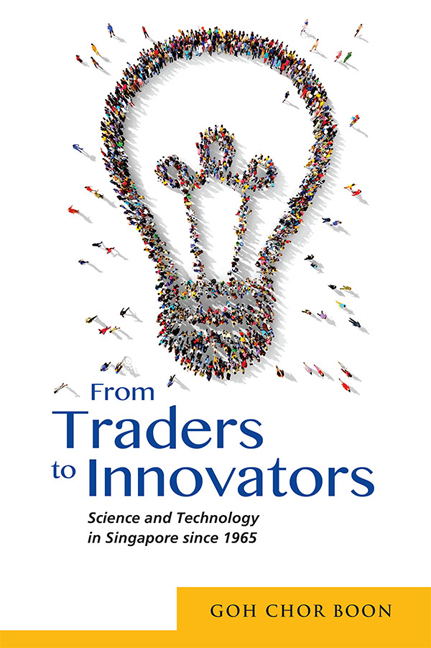Book contents
- Frontmatter
- Contents
- List of Abbreviations
- Introduction
- 1 From Dependency Theory to Creative Innovation
- 2 Surviving and Catching Up in the 1960s and 1970s
- 3 Developing a Technological Growth Trajectory in the 1980s
- 4 State Intervention and Technological Change
- 5 Nurturing a Scientific Culture
- 6 Sociocultural Attributes and R&D
- 7 Towards a Technologically Creative Society
- 8 Conclusion: Power of a Service-Brokerage Culture
- Bibliography
- Index
- About the Author
3 - Developing a Technological Growth Trajectory in the 1980s
Published online by Cambridge University Press: 19 May 2017
- Frontmatter
- Contents
- List of Abbreviations
- Introduction
- 1 From Dependency Theory to Creative Innovation
- 2 Surviving and Catching Up in the 1960s and 1970s
- 3 Developing a Technological Growth Trajectory in the 1980s
- 4 State Intervention and Technological Change
- 5 Nurturing a Scientific Culture
- 6 Sociocultural Attributes and R&D
- 7 Towards a Technologically Creative Society
- 8 Conclusion: Power of a Service-Brokerage Culture
- Bibliography
- Index
- About the Author
Summary
One key aspect to the development of Singapore's industrialization in the 1960s and 1970s was the recognition by the Singapore Government of the importance of science and technology in economic development. However, its liberal economic philosophy of attracting a mainly product-assembly type of foreign enterprise was a mismatch for meeting the objective of raising the level of technological competence of the workforce. By the end of the 1970s, realizing that low-technology and low-skill types of industries would not maintain a strong competitive edge over her neighbours, Singapore moved into the 1980s with the introduction of a new industrial policy package aimed at shifting the economy into a “Second Industrial Revolution”.
As a key component of Singapore's industrialization and with the aim of enhancing the country's economic competitiveness, a technological trajectory plan was developed during the 1980s. This was the first official blue print of the government's strategy to tap on science and technology. But the central role of MNCs in spearheading the country's progress in techno-industrial innovations reinforces technological dependency on external sources and, because of the “pro-MNCs” industrial policy, indigenous firms, as in the 1970s, were left behind. The overall impact of Singapore's industrialization during this period was to stifle the growth of a technological culture and, hence, slowed the drive towards deepening the indigenous technological base. Singapore achieved “fame” as the most competitive NIE in the Far East, but in reality achieved few “gains” in terms of developing its indigenous technological capability or self-reliance. The government's haste in leapfrogging towards achieving an advanced industrial status for the country created contradictions that could narrow rather than widen the road to this end.
THE SECOND INDUSTRIAL REVOLUTION
The 1980s saw the implementation of an aggressive development strategy, probably not undertaken by any other developing country — and the Singapore Government designated it as the “Second Industrial Revolution”. Presumably, Singapore had its “first” industrial revolution during the 1970s when the industrial policy of transforming the economy from a labour-intensive to a capital-intensive one was launched. Did Singapore actually experience an “industrial revolution”? Interestingly, the literature on the Singapore economy has so far failed to address this issue. Perhaps it was just a title with no significant implications. But the use of the term “industrial revolution” in the context of an economic history generally denotes a sustained and accelerated growth of indigenous technological innovation and scientific inquiry.
- Type
- Chapter
- Information
- From Traders to InnovatorsScience and Technology in Singapore since 1965, pp. 51 - 85Publisher: ISEAS–Yusof Ishak InstitutePrint publication year: 2016



